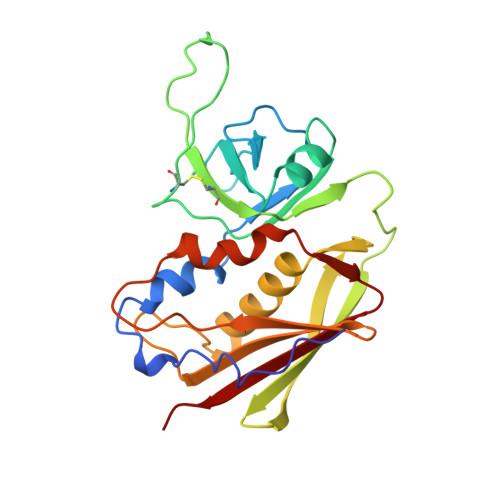Crystal structure of microbial superantigen staphylococcal enterotoxin B at 1.5 A resolution: implications for superantigen recognition by MHC class II molecules and T-cell receptors.
Papageorgiou, A.C., Tranter, H.S., Acharya, K.R.(1998) J Mol Biol 277: 61-79
- PubMed: 9514739
- DOI: https://doi.org/10.1006/jmbi.1997.1577
- Primary Citation of Related Structures:
3SEB - PubMed Abstract:
Staphylococcal enterotoxin B is a member of a family of toxins known as superantigens that activate a large number of T-cells (up to 20%) by cross-linking MHC class II molecules with T-cell receptors in a Vbeta-restricted fashion. The crystal structure of staphylococcal enterotoxin B presented here has been determined at 1.5 A resolution, the highest resolution so far for a superantigen. The final model contains 1948 protein atoms and 177 water molecules and has excellent geometry with root-mean-square (rms) deviation of 0.007 A and 1.73 degrees in bond lengths and bond angles, respectively. The overall fold is similar to that of other microbial superantigens, but as it lacks the zinc-binding site found in other members of this family, such as staphylococcal enterotoxin A, C2 and D, this enterotoxin possesses only one MHC class II binding site. Comparison of the crystal structure of free SEB and in complex with an MHC class II molecule revealed no major changes in the MHC-binding site upon complex formation. However, a number of water molecules found in the free SEB may be displaced in the complex or contribute further to its stability. Detailed analysis of the TcR-binding site of SEB, SEA and SEC2 shows significant differences which may account for the ability of each superantigen to bind specific Vbeta sequences.
Organizational Affiliation:
Department of Biology and Biochemistry, University of Bath, Claverton Down, Bath, BA2 7AY, U.K.
















